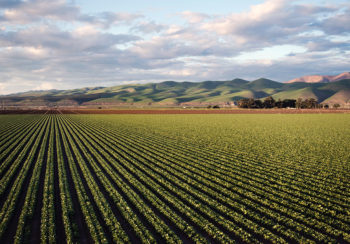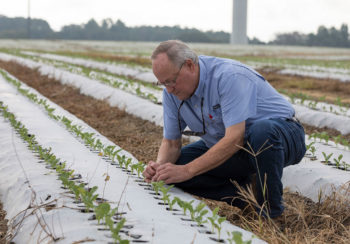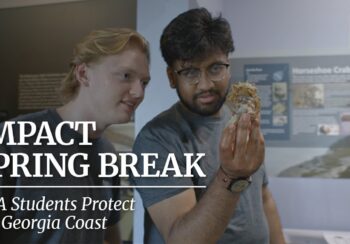During the pandemic, labor problems became acute on many farms in Georgia and across the country. Farms once staffed by humans to bring produce from the field to stores for purchase were suddenly short-staffed, and the global supply chain was severely impacted.
A team of researchers led by School of Computing Professor Prashant Doshi is designing collaborative robots to mitigate some of these potential challenges.
Working with UGA’s Vidalia Onion and Vegetable Research Center, a unit of the College of Agricultural and Environmental Sciences, and A&M Farms in Lyons, Georgia, they have tested a robotic arm in the task of sorting fresh Vidalia onions from those suffering blemishes. Combining a robotic arm with cameras and an AI trained to recognize the good and bad produce, the system can pick up onions, view it, and sort the good from the bad.
The project has shown progress in a type of task known as “pick-inspect-place.” Robots in agriculture or manufacturing have long been involved in picking and placing tasks. Here, researchers have added the element of inspecting using computer vision, as well.
“There are basically two AI models,” said Prasanth Suresh, a doctoral student on the project. “There’s one that teaches the robot the behavior and one that detects the object using vision. The second AI model will detect the object and instruct the proper behavior—closer inspection for blemishes on good onions or throwing blemished onions in the waste.”
The idea, Doshi said, is not to eliminate these professions for human workers, but to provide options, protect the job from labor shortages and to upskill workers into positions that require less strenuous conditions.
“Often, these workers work through high heat, dust, or other conditions,” he said. “We are not trying to replace this worker. … AI has suffered from a little bit of a perception issue. If you ask core AI researchers, their goal is not necessarily to design an AI that acts like a human, but to design rational agents that act optimally given the knowledge they have.”
Suresh and Doshi are joined by doctoral student Ehsan Asali on the project, all featured in this video.





